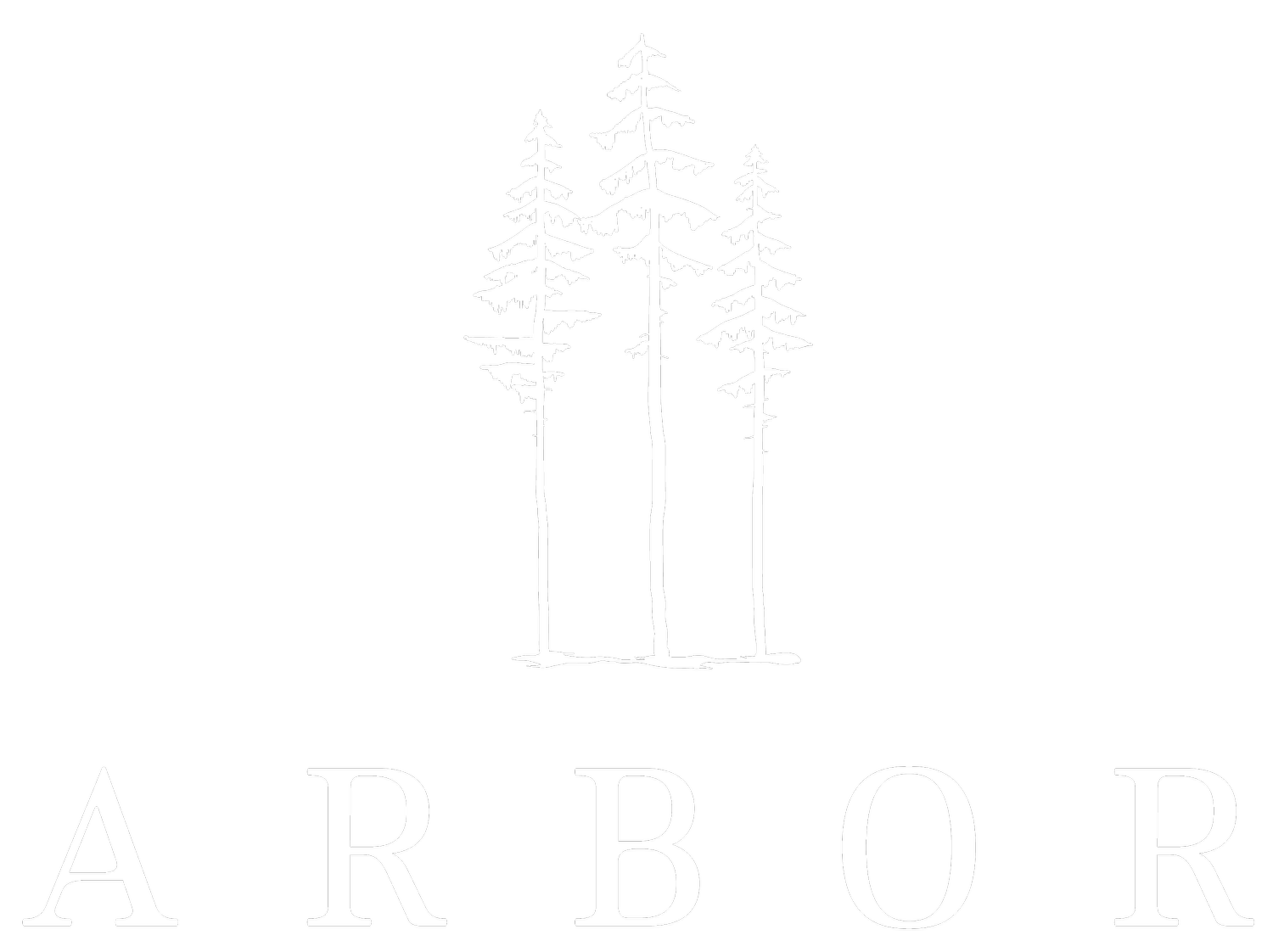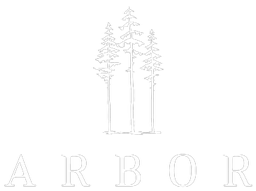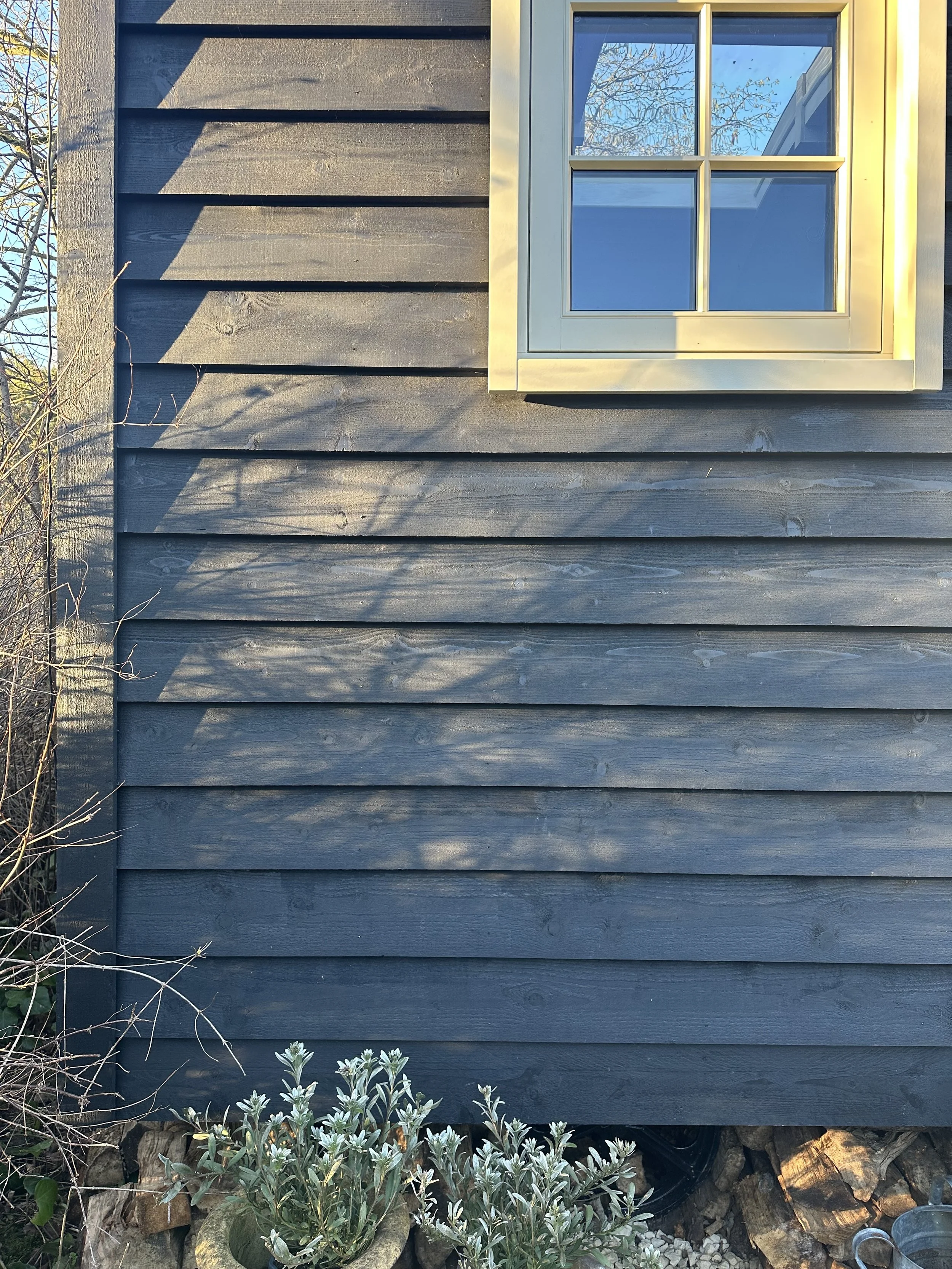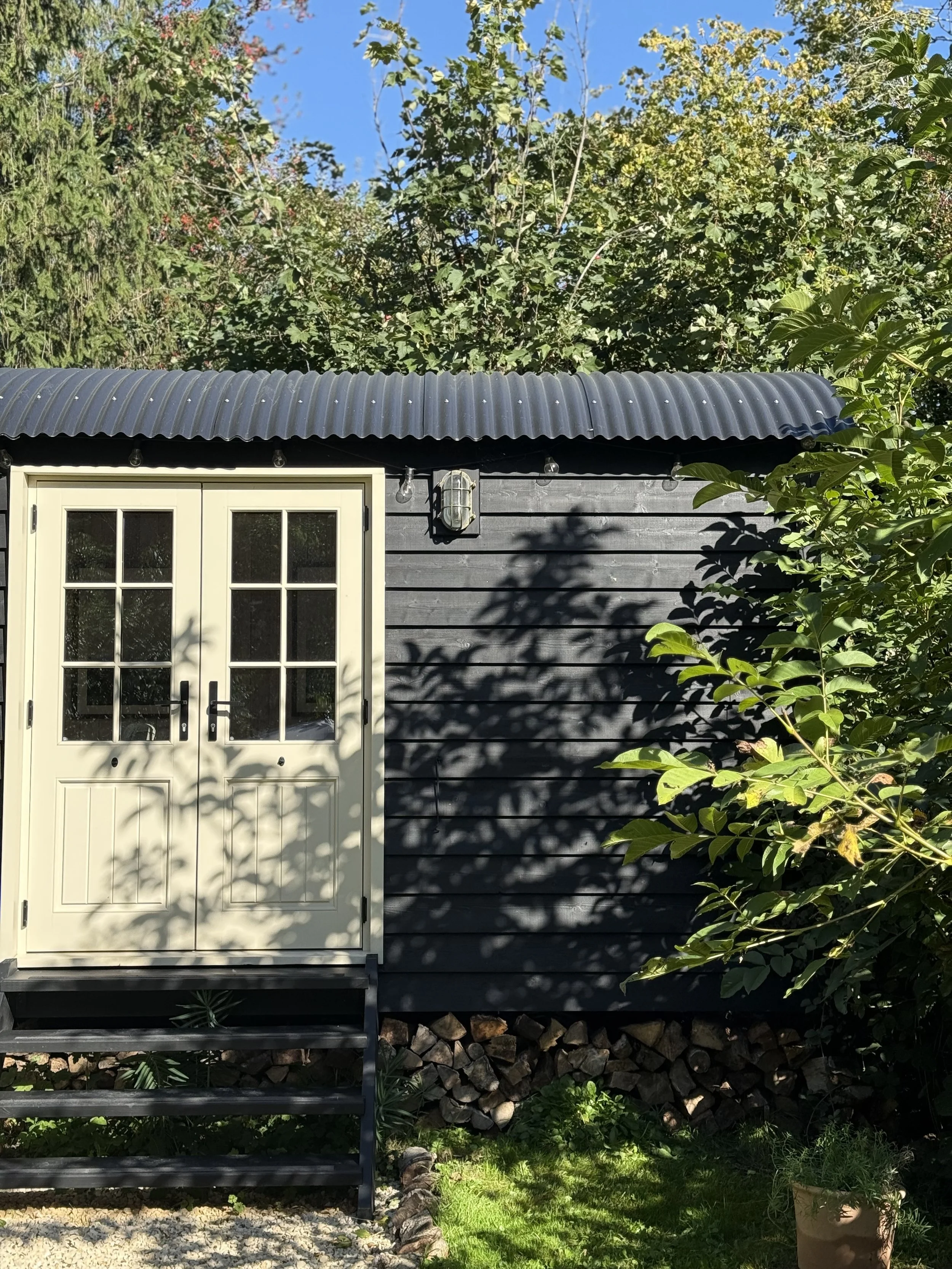What to consider when buying a Shepherd Hut
The enduring appeal of the Shepherd Hut
There’s something timeless about a shepherd hut. Once a humble refuge for farmers and herders, today it’s become a symbol of slow living, craftsmanship, and connection to nature. Whether it’s a luxurious guest suite tucked away in the garden, a private home office, or a romantic rental retreat, the shepherd hut represents a blend of tradition and modern comfort that few other spaces can achieve.
But buying one isn’t as simple as picking a model and signing on the dotted line. Like any significant investment, a shepherd hut is something you’ll want to get absolutely right — not only in its design and build quality, but in how it fits into your life, your property, and your long-term plans.
In this guide, we’ll walk you through everything you need to consider before buying a shepherd hut — from planning permission and build quality to interiors, delivery, and resale value — to help you make a decision that feels truly right for you.
1. Define the purpose of your Shepherd Hut
Before you even start comparing models, ask yourself: What will I use my shepherd hut for?
The answer to this question shapes every decision that follows — from layout and specification to whether you’ll need kitchen or bathroom facilities.
At Arbor Shepherd Huts, we typically divide our builds into two broad categories:
Private Use Huts – for homeowners seeking a home office, studio, guest suite, or garden retreat.
Hospitality Huts – for landowners and businesses planning to use huts as short-term rentals, boutique accommodation, or glamping units.
Each use case comes with its own considerations:
For private buyers:
Home Office Huts: Do you need built-in desk space, additional power sockets, or underfloor heating for all-season use?
Guest Suites: Will guests need their own kitchenette and en-suite bathroom?
Retreat Spaces: Is natural light or panoramic glazing a priority?
For hospitality businesses:
Rental Return: Self-contained huts with kitchens and bathrooms often qualify for lower VAT (5%), which can significantly impact your ROI.
Guest Experience: Small design touches such as oak steps, Belfast sinks, and cast iron radiators elevate guest satisfaction — and your nightly rate.
Durability: Heavy guest use means higher foot traffic; consider wipe-clean lime-washed flooring and hardwearing cladding finishes.
Taking the time to clarify your purpose ensures you’re choosing a layout, specification, and level of investment that perfectly fit your needs.
2. Decide on the size and layout
Once you’ve defined your purpose, the next consideration is size.
At Arbor, our huts range from 16ft to 30ft, with varying widths to accommodate everything from compact studios to self-contained homes on wheels.
Here are a few examples:
The Fawley (16’ or 18’) – Ideal for offices, art studios, or therapy rooms. A blank canvas to make your own.
The Waltham (22’ x 8’ or 22’ x 10’) – A popular choice for private guest suites and hospitality use, featuring a full kitchen and bathroom.
The Hambleden (22’ x 10’ and beyond) – A more spacious design for those seeking room to breathe, often chosen for high-spec or signature collaborations.
When choosing your layout:
Think practically. Where will furniture, doors, and windows be placed for maximum comfort and flow?
Consider the view. Orienting doors or picture windows toward a garden, lake, or open field can transform the atmosphere of the hut.
Plan for storage. Built-in cupboards, under-bed drawers, or a full-height wardrobe can make compact spaces feel effortless to live in.
Many buyers choose to visit our Neptune x Arbor show hut before finalising their layout — a great way to experience the space in person and see how design choices translate into reality.
3. Understand the build quality and materials
Not all shepherd huts are built alike. A well-built hut should last for decades, moving gracefully through seasons without warping, leaking, or deteriorating. This is where craftsmanship and materials matter most. At Arbor Shepherd Huts, we take a craftsman’s approach to every detail — from our black barn cladding and cast iron wheels to the oak steps and hand-finished interiors. But what should you look for when comparing suppliers?
Key Build Quality Factors:
Chassis: A solid steel chassis with anti-corrosive coating ensures long-term stability and allows for easier relocation.
Insulation: Look for natural, breathable insulation such as sheep’s wool or a high-grade alternative to maintain a healthy internal environment.
Windows & doors: Properly sealed, double-glazed joinery prevents draughts and condensation.
Exterior cladding: Larch, cedar, or treated barn cladding are best for weather resistance and visual appeal.
Interior finish: Solid timber, lime-washed oak, or painted boards offer warmth and longevity — avoid MDF or laminate boards that may warp over time.
Heating & power: Underfloor heating, cast iron radiators, or log burners provide year-round comfort, while integrated USB sockets add modern convenience.
A shepherd hut is only as good as its structure. Be wary of companies that cut corners with low-grade materials or pre-fabricated panels — the hut may look appealing initially but could struggle with damp or movement over time.
4. Consider planning permission and legal requirements
One of the most common questions we’re asked is: “Do I need planning permission for a shepherd hut?”
The answer depends on your circumstances. In many cases, a shepherd hut is considered a mobile structure and can be sited under permitted development rights, meaning you don’t need full planning permission. However, this isn’t always the case.
Factors That May Affect Planning:
Intended use: If it’s purely for personal enjoyment (a garden office or retreat), it’s usually fine under permitted development.
Residential use or rentals: If you intend to use the hut as a permanent dwelling or for commercial rental, planning permission is more likely to be required.
Location: Conservation areas, AONBs (Areas of Outstanding Natural Beauty), or listed properties often come with additional restrictions.
Utilities: Permanent service connections (water, sewage, electricity) may trigger planning considerations.
We work closely with planning consultants who can advise based on your property and local authority guidelines. In short: always check before committing, but don’t be put off — in most cases, shepherd huts remain a relatively straightforward addition to your land.
5. Think about utilities and installation
A shepherd hut isn’t just a pretty face; it’s a fully functioning living space. That means utilities need careful consideration early in the design process.
Key utility connections:
Electricity: Standard domestic connection or off-grid solar setups.
Water supply: Connection to mains or independent water storage system.
Waste & drainage: Connection to mains drainage, septic tank, or eco-friendly composting toilet.
Heating: Underfloor heating, cast iron radiators, or log burners.
At Arbor, we provide full delivery, installation, and connection support — ensuring your hut is ready to use as soon as it’s delivered. For remote sites or glamping businesses, we can also advise on sustainable off-grid options to reduce running costs and simplify planning.
6. Decide how bespoke you’d like your hut to be
One of the great joys of buying a shepherd hut is the opportunity to tailor it to your taste. Do you want a minimal, modern interior with clean lines and soft whites, or a traditional feel with natural timber, aged brass, and cast iron detailing? At Arbor, our bespoke approach allows you to choose from a wide range of finishes, layouts, and specifications — from kitchen units and flooring to lighting and bathroom fittings.
Typical Bespoke Options Include:
Vertical or horizontal cladding
Painted double doors or Crittal style glass doors
Reclaimed interior cladding
Lime-washed oak flooring
Brass, bronze, or black fittings
Feature windows or picture glazing
Integrated kitchens with Belfast sinks and twin hobs
Everhot or wood-burning stoves
We also collaborate with leading interior designers like Bee Osborn and Neptune Interiors, offering curated design schemes for those who want a fully appointed, ready-to-use space.
7. Budgeting and understanding the true cost
A shepherd hut is an investment — one that should be built to last a lifetime. Prices vary widely across the market, but quality craftsmanship and premium materials are worth every penny.
When budgeting, consider:
Groundworks: Preparing a level base or installing services.
Transport: Delivery and site access for larger huts.
Utilities: Connection costs for power, water, and waste.
Furnishings: Whether you’ll supply your own or opt for a styled interior package.
VAT: Some fully self-contained huts qualify for a 5% VAT rate, a considerable saving.
If you’re purchasing for business use — such as a glamping site or boutique rental — we can help forecast ROI and discuss multi-hut purchase strategies, including ready-to-go stock options for faster turnaround.
8. Access, delivery, and site preparation
Before your hut can arrive, it’s crucial to assess how it will be delivered and positioned. Shepherd huts are typically transported via a lorry, which lifts and places them precisely onto your site.
Delivery considerations:
Access roads: Are they wide and solid enough for a lorry?
Overhanging branches or power lines: May need trimming or temporary removal.
Turning space: Is there room to manoeuvre?
Ground preparation: A level base of compacted gravel or concrete pads is ideal.
At Arbor Shepherd Huts, we manage delivery from start to finish — advising on access, preparing groundworks specifications, and coordinating with our transport partners.
If access is tricky, we’ll conduct a site visit and provide a detailed plan to ensure smooth installation with minimal disruption.
9. Design details that make the difference
It’s often the subtle details that make a shepherd hut feel special. These design touches create not only beauty but also a sense of comfort, refinement, and individuality — the essence of an Arbor hut.
Here are some of the signature elements our clients love:
Double doors: Opening onto a deck or garden, blurring the line between indoors and out.
Cotswold fleece cladding: Adds softness and natural warmth to interior walls.
Lime-washed flooring: Enhances light and texture.
Cast iron radiators: Authentic charm with practical heat output.
Belfast sink & bronze fittings: A nod to heritage craftsmanship.
Underfloor heating: Invisible, efficient comfort for year-round use.
USB & USBc sockets: Small conveniences that make modern living seamless.
A shepherd hut should be as enjoyable to live in as it is to look at — and every material, colour, and fixture contributes to that experience.
10. Aftercare, maintenance, and longevity
A high-quality shepherd hut requires minimal upkeep — but like any handcrafted structure, a little care ensures it remains beautiful for decades.
Recommended maintenance:
Exterior: Repaint or re-oil timber cladding every few years depending on exposure.
Roofing: Inspect annually for debris or moss.
Windows & doors: Keep seals clean and moving parts lightly oiled.
Heating & plumbing: Service periodically, just as you would in a home.
At Arbor, we offer guidance on ongoing maintenance and can advise on refinishing, touch-ups, and servicing for long-term ownership peace of mind.
11. Resale value and return on investment
A well-built shepherd hut can retain — or even appreciate in — value. Arbor huts, in particular, have a strong resale market due to their bespoke craftsmanship, high-quality materials, and limited production numbers. For hospitality operators, ROI can be impressive: many clients recoup their initial investment within 2–4 years through rental income, particularly when positioned as luxury accommodation. For private owners, a beautifully crafted hut adds tangible and emotional value to your property — whether used as guest accommodation, a creative workspace, or a peaceful retreat.
12. Choosing the right builder
Ultimately, the most important decision you’ll make is who builds your shepherd hut. When comparing companies, consider:
Reputation and Reviews: Look for established builders with a proven track record.
Craftsmanship: Ask about materials, joinery methods, and insulation.
Transparency: Clear pricing, payment stages, and lead times.
Design support: Does the company offer layout drawings and design packs?
Aftercare: What kind of warranty or support is offered post-delivery?
At Arbor Shepherd Huts, every hut is built to order by our small, skilled team just outside Henley. We combine traditional craftsmanship with modern precision to create huts that are not only beautiful but enduring — a lasting reflection of the people who commission them.
Creating a space that feels like you
Buying a shepherd hut isn’t just about purchasing a building — it’s about creating a space that reflects your lifestyle, your taste, and your story. Whether you’re looking for a serene home office, a self-contained guest suite, or a collection of rental huts to launch your next business venture, taking the time to consider these key factors will help ensure you make the right decision for the long term. At Arbor Shepherd Huts, we pride ourselves on guiding clients through every stage of the journey — from design consultation to delivery and beyond.
If you’d like to start a conversation about your own hut, we’d love to hear from you.
Get in touch today to begin designing your shepherd hut with Arbor.





